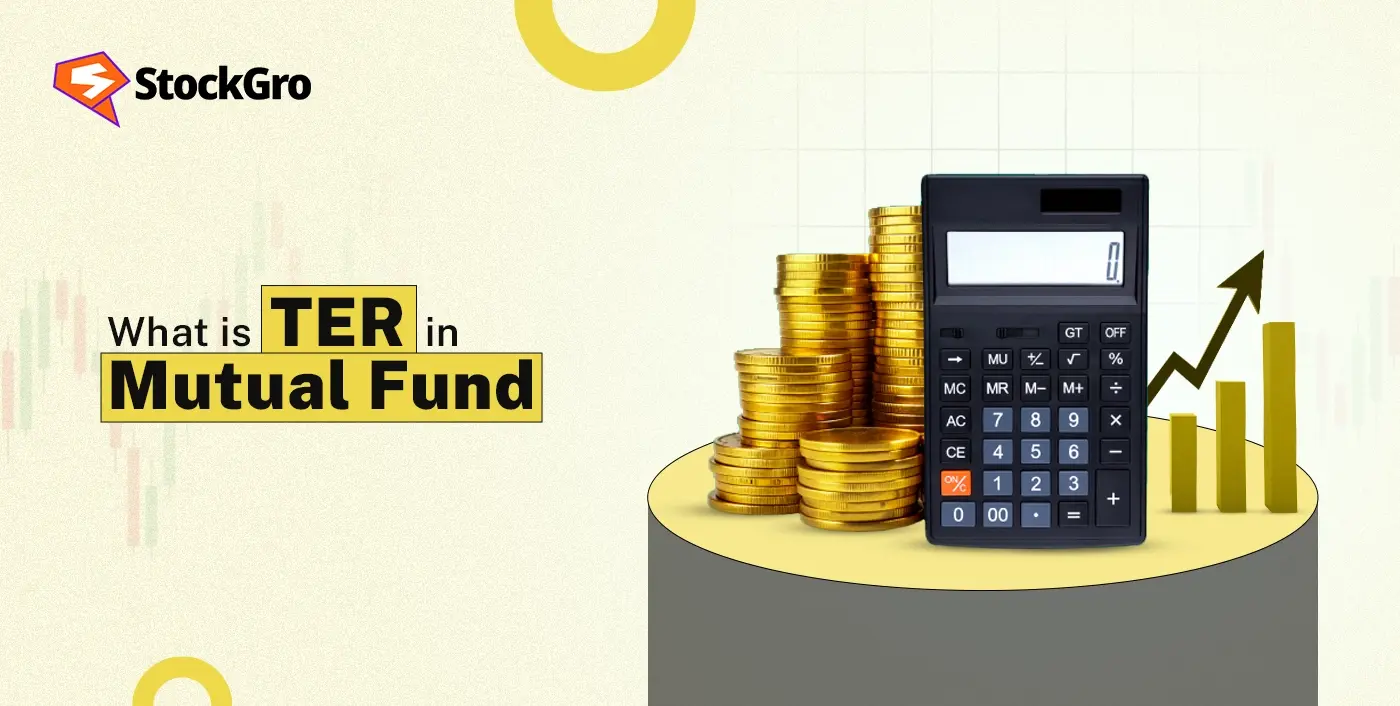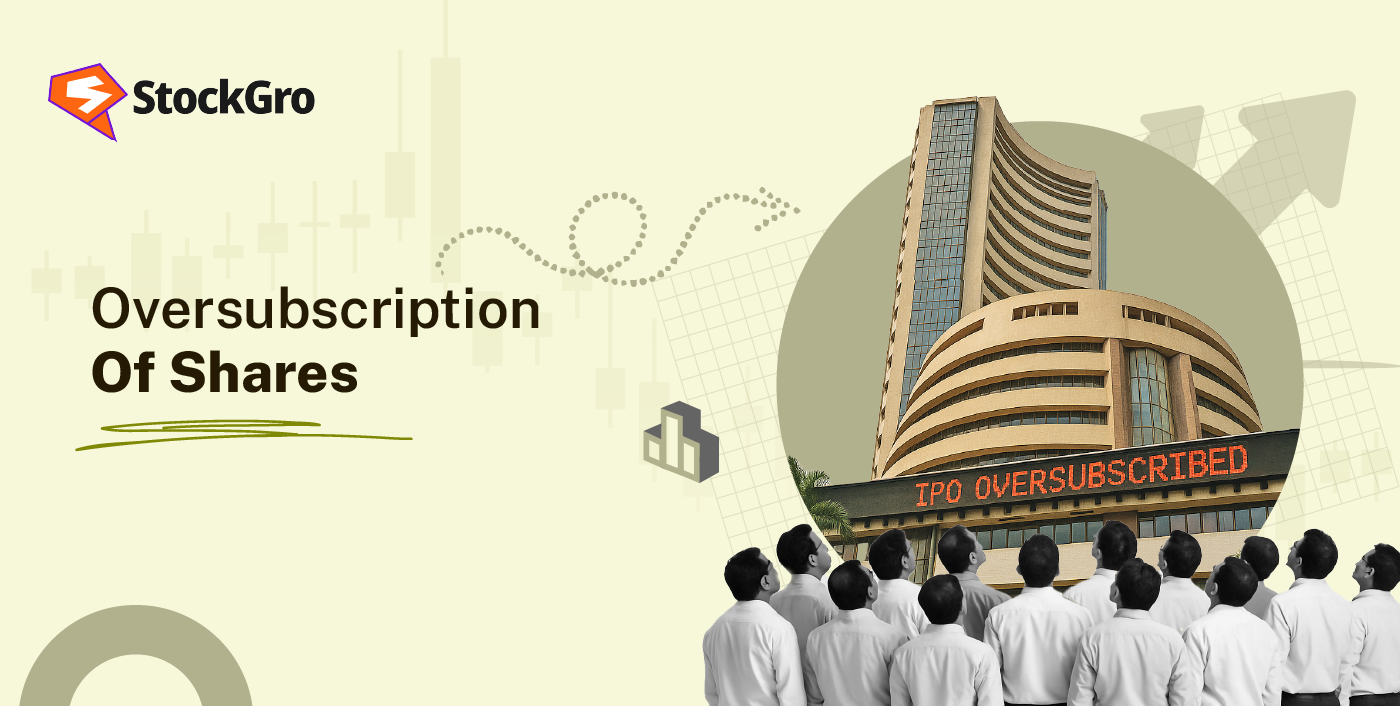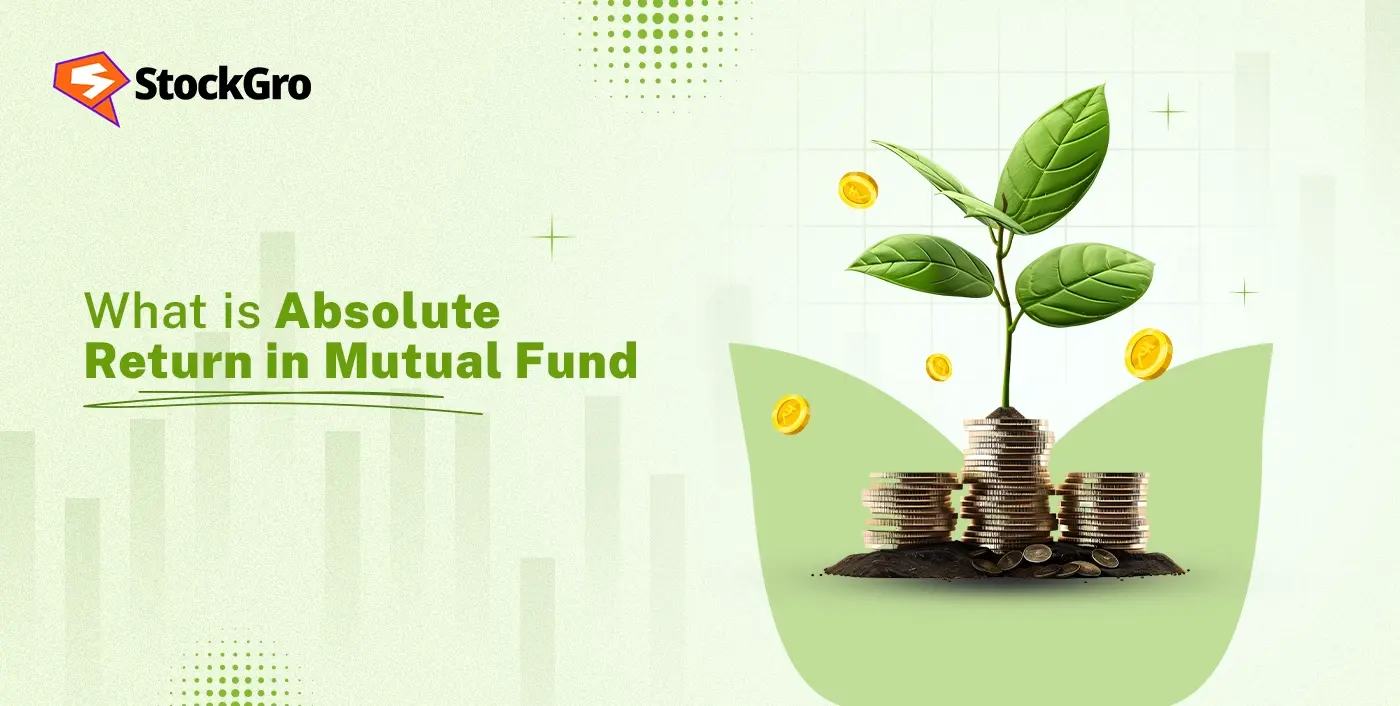
While investing in a mutual fund, you don’t just look at the profits, but also need to think about the cost involved in the fund management. Total Expense Ratio or TER is among the most significant expenses. Even though it may seem like a small percentage, TER directly impacts how much stays in your pocket eventually.
In this blog, we’ll discover more about what is TER in mutual funds, how to calculate it, the guidelines set by SEBI in India, and why it is important for investors. By the end, you’ll get to know why monitoring TER is so crucial for making smarter trading decisions.
What Is TER in a Mutual Fund?
In mutual funds, The Total Expense Ratio (TER) is the amount a mutual fund operating charges each year as a percentage to manage your investment. It is shown as a percentage of the fund’s average assets under management (AUM).
Assume that if a fund has a TER of 1.5%, that means they charge ₹1.5 annually for every ₹100 that is managed. The amount collected through TER covers fund management, marketing, oversight, and other operational expenses.
Though it looks small, TER reduces your net profits. In layman’s terms, if a scheme earns 12% and the TER is 1.5%, you might think your gain is 10.5%. In reality, TER is built into the NAV and covers multiple costs, not just a direct deduction from returns. Briefly, TER is the expense of owning a mutual fund.
TER Full Form: Total Expense Ratio Explained
Total Expense Ratio is the full form of TER, which indicates the total expense of managing a mutual fund scheme in proportion to the assets it manages.
The idea is simple: running a mutual fund demands resources like marketing teams, analysts, expert fund managers, and legal advisors. All these expenses are not billed individually to traders. Instead of being billed separately, these expenses are bundled into the TER and deducted daily from the fund’s NAV. For instance, if a scheme charges a fund management fee of 0.4%, marketing costs of 0.2%, registrar and custodian charges of 0.3%, plus trustee and audit fees of 0.1%, the total expense ratio comes to 1.0%. This 1% is automatically factored into the NAV each day, reducing the returns passed on to investors.
You cannot directly see these deductions, but they’re reflected in the daily NAV conditions, which is why two funds with alike portfolios may show slightly diverse NAVs, because of the difference in TER.
How Is TER Calculated? (Formula + Example)
TER’s formula is:
TER = (Entire costs of the Fund ÷ Average AUM) × 100
Here, all-inclusive costs include supervision charges, safekeeping fees, fund management dues, registrar fees, and marketing expenses.
Example:
Consider your mutual fund typically manages around AUM of ₹500 crores yearly and spends ₹7.5 crores to do so.
That means, TER is basically 1.5%, calculating (7.5 ÷ 500) × 100 = 1.5%.
Basically, if you put ₹1,00,000 in this fund, you’ll pay ₹1,500 yearly for expenses, which will reduce how much profit you actually make.
Components of TER (AMC, Admin, Marketing, Custody, etc.)
TER is not about a single fee, but includes multiple components:
1. AMC Fee for Managing Fund: For controlling the fund portfolio, this goes to the Asset Management Company.
2. Directorial Charges: Covers costs of accounting, record-keeping, and customer support.
3. Registrar & Transfer Agent Costs: For handling transactions, keeping track of investor records, and updating accounts.
4. Custodian Expenses: Charged by custodians for holding the fund’s securities.
5. Marketing & Distribution Expenses: Advertising, promotion, and distributor commissions.
6. Legal & Audit Dues: Charges for audits, compliance, and legal work.
Each of these components is included in the final TER that traders pay.
Regulatory Caps on TER in India (SEBI Slabs)
The maximum TER in India, charged by the fund companies, is determined by the Securities and Exchange Board of India or SEBI. This was effective from 1st of April 2020. This keeps expenses down for investors.
| AUM Slab | Equity Funds (Max TER) | Debt Funds (Max TER) |
| Up to ₹500 crore | 2.25% | 2.00% |
| ₹500 – ₹750 crore | 2.00% | 1.75% |
| ₹750 – ₹2,000 crore | 1.75% | 1.50% |
| ₹2,000 – ₹5,000 crore | 1.60% | 1.25% |
| Above ₹5,000 crore | 1.05% | 1.00% |
The cap is even lower for debt funds, with a max of 2.00% lessening further as AUM grows.
This slab structure encourages fund houses to lower TER as their AUM increases, benefiting traders.
TER’s Impact on Investor Returns
Even a small gap in TER can create a huge difference in sustainable wealth creation.
Let’s say, two funds deliver a gross return of 12% yearly:
- Fund A with TER equals 1.5% → Net profit = 10.5%
- Fund B with TER = 0.5% → Net return = 11.5%
As an example, an investment of ₹10 lakhs over 20 years, this 1% difference results in almost 9 lakhs extra wealth in Fund B (due to compounding).
Therefore, traders must always factor in TER while selecting between two otherwise alike funds.
Active vs Passive Funds: TER Comparison
The TER broadly varies for different mutual fund types:
1. Active Funds:
- Supervised by expert fund managers.
- Include research, evaluation, and active decision-making.
- Maximum TER is usually between 1% and 2.25%.
2. Passive Funds (Index Funds/ETFs):
- Passive funds track a market index (e.g., Nifty 50, BSE Sensex) to replicate its performance, not outperform it, with minimal fund management.
- Demands minimal management.
- Very low TER, often between 0.05% and 0.5%.
This is the reason for many traders shifting towards passive funds, as the cost advantage compounds eventually.
Direct vs Regular Plans: TER Differences
Indian mutual funds come in two types of plans: Direct and Regular.
Direct Plans: Directly bought from AMC without intermediaries, and no distributor commission is involved. As a result, the TER is 0.5% to 1% lower than regular plans.
Regular Plans: Sold through advisors or distributors, where commission in TER is included, making them expensive.
Example:
If the regular plan’s TER is 1.8% and the direct plan’s is 1.0%, the gap of 0.8% may not feel a lot.
But due to lower costs, the direct plan could generate lakhs of extra profits over 15 to 20 years.
Hence, cost-sensitive traders often choose direct plans.
TER vs Other Costs (Transaction, Exit Load)
While TER is the most significant recurring cost, traders must also be aware of the charges:
- Transaction Charges: Small brokerage or exchange charges for purchasing or selling securities.
- Exit Load: A penalty, typically 0.5% to 1%, if you redeem units before a certain duration.
- Stamp Duty: Levied on the purchase of units.
The difference is that TER is current and deducted regularly, while transaction charges and exit loads are one-time.
Importance of Monitoring TER Changes
Fund houses can revise TER after a certain time, within SEBI’s permitted limits. As a
trader, you should track these changes because:
- A sudden rise in TER reduces your profits.
- Deliberately high TER may specify inefficiency.
- Lower TER can make a fund more competitive.
Many traders emphasise only yields but overlook TER. Practically, monitoring TER is as important as tracking performance.
Conclusion
Total Expense Ratio or TER might seem tiny, but in long term it affects how much money you make from mutual funds. If you know what is TER in mutual funds, how to figure it out, the SEBI guidelines, and the difference between active & passive funds or direct & regular plans, you can make smarter choices.
A low TER helps you retain more of your returns over time, while a higher TER gradually eats into your earnings. So next time you shortlist a mutual fund, don’t just consider returns history; always check the TER before investing.
FAQs
A mutual fund’s Total Expense Ratio or TER is calculated by the calculation of a scheme’s entire resources that go towards covering its yearly operational expenses. You can calculate this by applying the formula: TER = (Total Costs ÷ Total Assets) × 100. Assume if a fund manages ₹500 crores and its total annual expenses, including management fees, administration, and distribution costs, amount to ₹5 crores, then the TER will be 1%. This ratio specifies the fund management proficiency.
Base TER in a mutual fund refers to the standard cost ratio disclosed by the fund house before considering additional charges like Goods and Services Tax (GST) on management fees, brokerage, or transaction costs. It essentially gives traders the base level of costs charged by the fund for managing assets. Assume, if a fund shows an initial TER of 1.25%, that’s the least expense traders can expect. The final TER may be a bit higher after statutory levies and other costs.
A mutual fund’s Total Expense Ratio or TER covers a bunch of costs. This includes the fee the Asset Management Company charges for managing the fund, administrative dues, expenses for registrar and transfer agent, custodian charges for keeping the assets safe, and marketing or distribution costs, particularly in regular plans. Basically, it’s all the fund’s running costs divided by how much the fund they’re managing. Since all these charges are reduced from the fund’s corpus, they directly impact investor profits. Understanding the breakdown helps traders evaluate whether a scheme is cost-efficient.
To protect traders, the Securities and Exchange Board of India (SEBI) has made some clear rules on TER. For equity-oriented plans, the TER can be as high as 2.25% for ₹500 crores assets under management (AUM), reducing steadily as AUM increases. For debt funds, the ceiling is lower, starting around 2% and reducing with a higher AUM. Extra costs may apply in cases such as investments in smaller cities. These caps guarantee clarity and equality, preventing unnecessary costs from eroding investors’ sustainable gains.
TER directly affects your mutual fund profits. It’s taken out of the fund’s money before traders get their profits. If the TER is high, you get less. If it’s low, you get more. Say, a fund makes 12% in a year, but the TER is 2%. You only end up with 10%. Therefore, monitoring TER helps in maximising net wealth creation.
Index or passive funds typically have lower fees because they don’t require active stock-picking, research, or frequent portfolio adjustments. They just follow a market list like the Nifty 50 or Sensex. Since fund managers only need to monitor and rebalance in line with the index, the supervision and administrative expenses are nominal compared to actively managed funds. So, the fees can be really low, like 0.2% to 0.5%, which makes them a good deal, if you’re investing for a long time.
The dissimilarity in direct and regular plans’ TER lies in the distribution expenses. Regular plans include fees for intermediaries like brokers or distributors, so the overall TER is higher. On the contrary, Direct plans are bought directly from the Asset Management Company (AMC) without any third-party involvement, having a lower expense ratio. In the long run, this can really boost your returns if you go with direct plans.

